Hatchbacks
New Cars to Buy – Exciting!
Along with the new SUVs showcased last time, Australia will also see some other exciting vehicles arriving in the coming months. Keep your eyes out for the following:
Honda
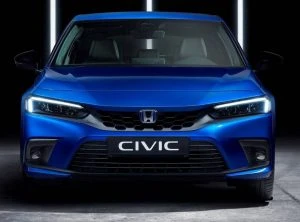
Civic Hybrid
Honda’s new Civic hybrid has its own subtle design features that set it apart from other Civic models. Hybrid-specific displays for the infotainment screen and instrument cluster gives the car its own environmentally friendly twist, plus the revised rear bumper is designed to conceal the exhaust outlets. Honda’s Civic Hybrid also gets blue accents for its Honda badges, and there is a special e:HEV tailgate badging to set it off nicely.
As a driver, the new Honda Civic Hybrid is an impressively competent vehicle with great economy and plenty of get up and go. The Civic HEV’s hybrid system is based around the 2.0-litre naturally-aspirated Atkinson-cycle petrol motor that is found in the current Honda Accord VTi-LX Hybrid. Matching the engine output to a smooth CVT automatic makes for an excellent easy car to drive. 315 Nm of torque provides grunt when you need it and the 135 kW of peak power suits this car well and delivers a bigger punch than the standard Civic’s 131 kW/240 Nm levels.
The front-wheel drive Honda Civic Hybrid is likely to be more efficient than the Accord Hybrid and even more so than Toyota’s Corolla Hybrid (4.2 litres/100 km).
BYD
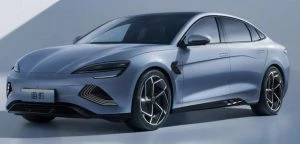
BYD Atto 4
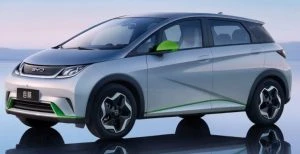
BYD EA 1 (Dolphin)
BYD Auto is the largest EV manufacturer in the world and is the automotive division of the Chinese multinational manufacturer BYD Company. Along with some SUV models, BYD is also bringing their Atto 4 sedan and their neat little EA 1 to Australia.
The BYD Atto 4 is a mid-size sedan that looks beautiful, sporty, and aerodynamic. Equipped with loads of the latest technology and also obtaining power from large batteries with a unique design, the Atto 4 impresses. Standard Atto 4 versions get a 61.4 kWh battery pack and a claimed 550 km range. The pricier models get a larger 82.5 kWh unique Blade battery with a claimed range of up to 700 km. Having the larger battery and an AWD system, this flagship BYD Atto 4 can reach 100km/h from a standstill in just 3.8 seconds!
More BYD excitement has the imminent arrival of the BYD EA 1 Hatchback. In China they call the BYD EA 1 the rather endearing name ‘BYD Dolphin’. This is a small Chinese EV hatchback that is being picked to be priced at or less than $30,000 in Australia. The small all-electric hatchback will be available with various battery and drivetrain configurations, all using a single electric motor to power the front wheels.
Two battery capacities: 30.7 kWh or 44.9 kWh will be available for the EA 1, both of which can be paired with a 70 kW/180 Nm motor. The larger 44.9 kWh battery can also be linked to a 130 kW/290 Nm motor, providing swifter acceleration and cruising speeds. Larger batteries will also become available over time for the little EA1 – particularly necessary, as Australia is a pretty vast land mass.
Managing director, Luke Todd, stated that “Our view is [that] in Australia any EV must have a minimum – even for city running – of 400 km to be accepted in the Australian market. All of our vehicles will have at least a 400 km range … our target is 500 km-plus.”
Cupra
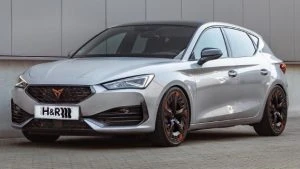
Cupra Leon
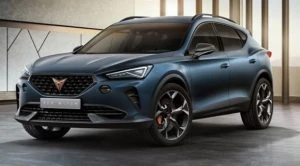
Cupra Formentor
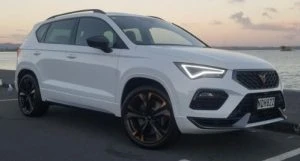
Cupra Ateca
Cupra is a Volkswagen-owned Spanish brand who have opened their doors to import their vehicles to Australia, offering us a 3-strong model range.
The exciting range of Cupra cars – Ateca (SUV), Leon (Hatchback), and Formentor (Crossover) – will spearhead the Australian line-up.
The Cupra Ateca SUV comes exclusively in the VZx form, so 221 kW of power and 400 Nm of torque is sent through the 4Drive AWD system to deliver 0-100 km/h in 4.9-seconds. I can see plenty of performance-SUV lovers who want to drive something as unique looking as the Cupra Ateca SUV wanting one!
The Cupra Leon Hatchback will be offered in VZ, VZe and VZx specification levels. So along with plenty of technology and differing variants, there will be a 2.0-litre turbo 140 kW/320 Nm, 180 kW/370 Nm, 180kW/400 Nm (Hybrid), and 221 kW/ 400Nm outputs respectively. So, there’s something for everyone here!
The Cupra Formentor is the Crossover Cupra and boasts the 4Drive AWD system on the V and VZx variants. Note the gorgeous crossover body styling that brings with it plenty of space, practicality and comfort.
All new Cupras sold in Australia will include a 5-year, unlimited kilometre warranty.
Volvo
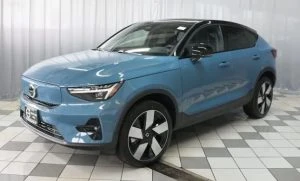
Volvo C40
Volvo has a new C40 coming! There are two versions offered that are based around one having a single electric motor and the other a dual electric motor layout. The Volvo C40 shares the electric powertrains with the XC40. Boot space is measured at 413 litres for both the single and dual motor versions.
Volvo’s the single motor C40 uses a 69 kWh battery pack and a single electric motor over the front axle. It produces 170 kW of power and 330 Nm of torque, combining nicely to provide drivers with a potential 0-100km/h dash being finished in 7.4 seconds. A full charge has a range of over 400 km.
Jump over to the Volvo C40 with its dual motor system, and you’ll find a larger 78 kWh battery pack. An electric motor for the front axle and an electric motor for the rear axle has this Volvo C40 equipped with AWD and capable of seeing off the 0-100km/h sprint in a claimed 4.7 seconds. That’s pretty swift! Again, a full charge should be able to take you over 400 km.
The single motor Volvo C40 kicks off at around $74,990, and the dual motor model around $82,490.
Audi
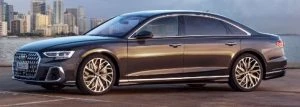
Audi A8
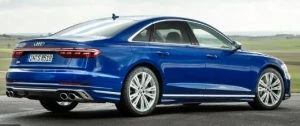
Audi S8
Audi’s A8 and S8 facelifts are coming. The A8 Sedan and Audi’s sportier S8 version have been a stunning proposition for some time, and they keep getting better. Quite an attractive large and luxurious sedan, the 2022 A8 delivers new levels of technology in the areas of comfort, entertainment, and safety.
The stunning A8 exterior remains similar to the outgoing model but you will find some nice subtle changes on the outside. 18–21-inch rims are available with six new designs to choose from. Audi’s ‘singleframe’ grille has been widened and pushed out at the bottom corners for a sportier, more athletic appearance.
The luxury sedan has grown a bit longer, making Audi’s flagship even more comfortable. It competes with the best big sedans from Mercedes Benz, BMW, and Lexus, so the relaxation seat package comes as no surprise, adding a back massage function, a foot warmer, an optional centre control console, and a fold-out table. 23 Bang and Olufsen speakers create an amazing audio sound.
Around the world, the new Audi A8 and A8 L versions will offer a wide selection of chiefly twin-turbo V6 engines that have 48-volt mild-hybrid assistance. All models will boast Quattro AWD and an 8-speed automatic. Audi S8 versions get the sweet-singing twin-turbo 4.0-litre V8 petrol ICE that can move this luxury–sports sedan from 0-100km/h in just 3.8 seconds. Boasting all-wheel steering, the S8 is a nimble thing of beauty.
Citroen
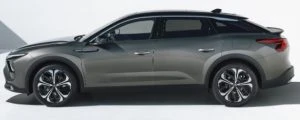
Citroen C5 X
Citroen calls the C5 X a “unique combination of the elegance of a sedan, the dynamism of a wagon and the elevated stance of an SUV”.
In my eyes, the new Citroen C5X looks both elegant and comfortable – just like a special Citroen should. The Citroen C5 X is a large 5-seater that measures 4805 mm in length. Luggage capacity is 485/1580 litres for the PHEV version and 545/1640 litres for the ICE car. Inside its cabin, you’ll find the C5 X is very comfortable, and the sensible interior layout is pleasant on the eye. A load of high-tech interior features include a digital driver’s display, a big 12.0-inch central touchscreen, Android Auto, Apple CarPlay, and a novel toggle gear shifter.
Adaptive dampers increase the Citroen C5 X’s ability out on the road, ensuring that those of us who love comfort can ride all day in a C5 X, all very comfortably indeed.
Equipped with the 165 kW/300 Nm 1.6-litre turbo-petrol four-cylinder ICE, the Australian version will have decent power (0-100 km/h in 8.8 seconds) while being hooked up to an 8-speed automatic transmission and FWD. A top speed of 232 km/h is doable. Citroen’s Australian importer is also considering launching the new Citroen C5 X with a PHEV powertrain. This system mates the 1.6-litre turbo ICE with an 81.2 kW electric motor and a 12.4 kWh lithium-ion battery for a total system output of 165 kW and a claimed electric range of 50 km (WLTP). The PHEV version is slightly quicker, boasting a 7.9 second time for the 0-100 km/h dash.
Peugeot
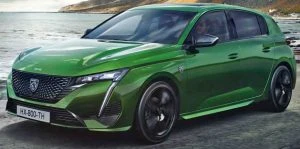
Peugeot 308
Peugeot is bringing us the next-generation 308 and the 3rd generation 308 is a classy looker from any angle you care to look at it from the curb side. Peugeot’s Australian line-up will consist of 4 variants: the 308 GT Hatch, 308 GT Premium Hatch and Wagon, and the Peugeot 308 GT Sport PHEV hatch – a plug-in hybrid (PHEV).
The PHEV versions of the 308 Hatch and Wagon will use larger batteries and more powerful motors than you’ll find in the smaller Peugeot e-208 supermini models. A Peugeot 308 GT Sport PHEV model sees a 132 kW 1.6-litre turbocharged 4-cylinder ICE unit paired to an 81 kW electric motor. The total output of the powertrain sends out a sprightly 165 kW of power and 360 Nm of torque to an AWD system for maximum traction and plenty of excitement.
New 308s with ICEs will be powered by a 1.2-litre turbocharged 3-cylinder petrol engine that produces 96 kW of power and 230 Nm of torque. This little engine is paired with an Aisin-sourced 8-speed automatic transmission that sends the power to the front wheels. Peugeot offers an e-308 in Europe, which is a pure electric variant.
Ford
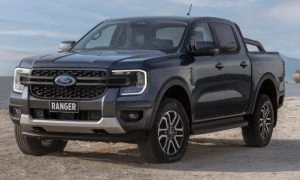
Ford Ranger Ute
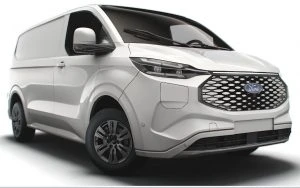
Ford E Transit
The new Ford Ranger Ute is packed with smart functionality and a cool ‘Tonka Toy’ appearance. Commands via voice, phone, or the central touchscreen has you controlling many of the infotainment features. Wireless phone charging, a smart climate control system, and a new digital cluster for the driver keeps the tough new Ford Ranger models at the head of the pack. Its chunkier styling with a wider stance, big towing capacity, and superior off-road ability are part of the new Ford Ranger experience.
Like the brand new Ford Everest SUV, the Ranger Ute houses the latest 3.0-litre turbo diesel V6 ICE, which is also offered alongside the existing 2.0-litre twin-turbo 4-cylinder diesel engine for 2022/23. The V6 boasts 184 kW of power at 3250 rpm and 600 Nm of torque from 1750-2250 rpm.
Ford’s latest E-Transit vans will be available with an all-electric powertrain for more efficient, zero-emissions driving.
Genesis
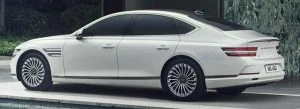
Genesis G80 Sedan
The charming Genesis G80 Sedan has gone pure EV and it is a stunner on the styling front. The car’s opulence and quiet ride will impress. An 87.2 kWh lithium-ion battery pack is housed under the floor, and a claimed Worldwide Harmonised Light Vehicle Test Procedure (WLTP) range of over 500 km is a decent amount of travel. The G80 EV Sedan has a pair of electric motors that work in unison to develop a maximum of 272 kW. This level of power combines with instantaneous torque of up to 700 Nm. These are powerful figures, allowing the luxurious Genesis Sedan to sprint from 0-100 km/h in less than 5 seconds.
Fuel Miser Comparison (2010/2022) Smart-VW

I thought I’d look at a list of cars that featured in an article written back in 2010, where I compared some of the thriftiest cars at that time. These were cars which had been designed to function as some of the world’s best fuel sippers. These vehicles were sold new in Australia, but I thought I’d add a new twist this time by adding what we can consider as the brand new version of these old models with their statistics for fuel consumption as a comparison – you know, a bit of nostalgia along with the new, and what’s changed – or not.
Note that the fuel consumption figures are based on the number of litres of fuel consumed every 100 km travelled. Often real world situations can play havoc with Lab tested fuel consumption figures, but this definitely gives you an interesting picture And, here is the list that is in alphabetical order – just to be helpful:
Smart
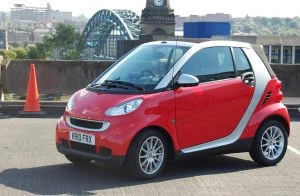
2010 Smart ForTwo
By far the smallest car being talked about in 2010 with excellent fuel consumption was the Smart ForTwo. It still fits into car parks like you wouldn’t believe! Small and safe, comfortable and peppy, any smart CBD commuter would be tempted by the tiny Smart ForTwo. It boasts a combined fuel economy figure that sits well under 5 litres/100 km – and this all coming from a ULP motor. Currently you can’t buy any new Smart car in Australia, though I’ve heard that, in the near future, they are making a comeback with purely electric power and with new design.
SsangYong
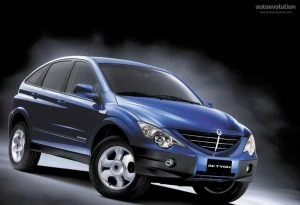
2010 SsangYong Actyon SUV
At the time, the 2010 SsangYong Actyon was about the most frugal SUV you could buy new at an impressively low price. The economic SUV has muscly looks and a rugged design that could see the vehicle handling tough off-road terrain with ease. SsangYong uses a 2.0 litre turbo-diesel engine in this vehicle, which packs over 300 Nm of torque to go with its excellent 4×4 underpinnings. Getting any 1.8 tonne vehicle to manage under 5 litres/100 km is a feat. So, well done to SsangYong! Currently, no more SsangYong vehicles quite match the excellent economy of an Actyon Diesel.
Suzuki
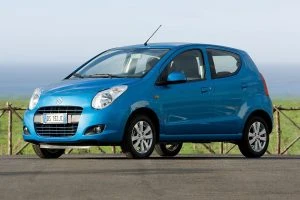
2010 Suzuki Alto
Budget priced, and one of the few petrol powered cars back in 2010 delivering awesome fuel economy was the Suzuki Alto. The Suzuki Alto 1.0 litre GL and GLX has an attainable fuel economy figure of 4.8 litres/100 km. The Suzuki Alto is also nice looking (bug-eyed), has six airbags, and even comes with ESP as standard in the GLX model. Great for around town – you’d be nuts to not consider an Alto.
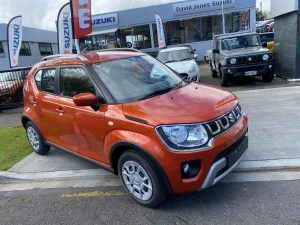
2022 Suzuki Ignis
There are no new Altos in 2022, but Suzuki do offer us the awesome little Suzuki Ignis GL Manual and GLX auto. These cars use a 1.2-litre ULP motor and deliver a similar fuel consumption to the 2010 Alto. Safety in new Suzuki cars has taken a big leap forward, so too has all the modern technology. Brand new Swift and Baleno models are definitely worth a look. These are also economy-driven cars with decent comfort, technology, and practicality.
Toyota
Where would the world be without Toyota? For a very frugal, spacious, and practical drive, the clean burning 2010 Toyota Prius III offered a 1.8 litre petrol hybrid engine. It didn’t come cheap, but it was certainly friendly on the environment. You could expect around 4.0 litres/ 100 km – sometimes better.
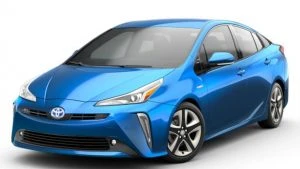
2022 Toyota Prius
You can now buy a 2022 Toyota Prius model for between $42–50k. These are nice cars and much more impressive to look at than the older models. They are safe and packed with excellent features. The Prius still continues with the same petrol-electric engineering that made it such a standout when it was launched in 2001. The same basic technology remains for the 4th-generation Prius, as well as all Toyota/Lexus hybrids these days. So, what a new Prius offers is a small-capacity 4-cylinder engine that works through a planetary gear set to dispense the delivery of power to the front wheels (or also the rear wheels in SUV variants). The current Toyota Prius is powered by a 72kW/142Nm 1.8-litre engine that combines with an electric motor to produce a joint maximum power output of 90kW and a claimed fuel consumption of 3.4 litres/100km. Better than ever! Toyota newest vehicles: the CH-R, Camry, Corolla, RAV-4, and Yaris Hybrid models are available with very low fuel consumption figures. Toyota and Honda are masters of the Hybrid-game, and have been for quite some time.
VW
Back in 2010, the Germans offered plenty of cars with excellent fuel consumption. Volkswagen has for a long time offered well-designed, reliable and fuel efficient motorcars. They are generally refined, elegant, and roomy, and the 2010 VW Golf 77TDI variant easily boasts fuel economy figures below 5 litres/100 km on a combined cycle.
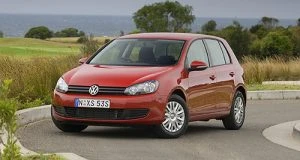
2010 VW 77TDI
2022 sees the Golf Hatch with 5 models, and in Wagon form it has a couple of nice new variants. The base models use a 110TSI 1.4-litre ULP motor, which is a 4-cylinder that is smooth and can return a claimed 5.8 litres/100 km. 250 Nm of torque offers muscle when you need it, and the car cruises at high speed effortlessly. The 8th-generation of the Golf brings not only fresh external and interior design, but it is also the safest, most tech-laden ever.
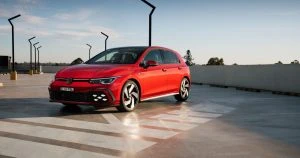
2022 VW Golf 110TSI
There are other new cars right across the auto-manufacturing spectrum now that offer superb fuel economy or EV power alone. It’s interesting how in that time (2010–2022) we’ve seen auto manufacturers taking a shift away from providing the new-car buyer with several frugal diesel family options to a fleet that is now a lot more Hybrid in flavour. It’s a change coerced by new government law and regulation. However, hybrid vehicles are superb automobiles that offer top fuel consumption figures and practicality, creating that much needed bridge between purely fossil fuel vehicles and completely EV-powered automobiles
Do check out the brand new arrivals. Cars like the Hyundai IONIC, Hyundai KONA, Kia EV6, Kia Niro, Mazda MX-30, BMW i and Hybrid models, Mercedes Benz EQA and EQC models, MG HS EV, Polestar cars, Tesla, and Volvo’s Recharge and Hybrid models are just some of the amazing new cars available that we can now buy that weren’t even a showing back in 2010.
Happy commuting!
Fuel Miser Comparison (2010/2022) Ford-Peugeot

I thought I’d look at a list of cars that featured in an article written back in 2010, where I compared some of the thriftiest cars at that time. These were cars which had been designed to function as some of the world’s best fuel sippers. These vehicles were sold new in Australia, but I thought I’d add a new twist this time by adding what we can consider as the brand new version of these old models with their statistics for fuel consumption as a comparison – you know, a bit of nostalgia along with the new, and what’s changed – or not.
Note that the fuel consumption figures are based on the number of litres of fuel consumed every 100 km travelled. Often real world situations can play havoc with Lab tested fuel consumption figures, but this definitely gives you an interesting picture. And, here is the list that is in alphabetical order – just to be helpful:
Ford
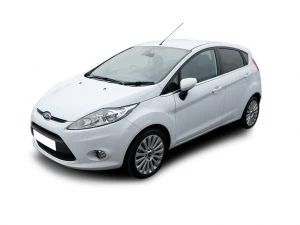
Ford Fiesta Econetic 2010
Back in 2010, the benchmark for fuel-misers belonged to the stylish Ford Fiesta Econetic. Nothing was able to beat the claimed 3.7 litres/100 km fuel economy figure that this car offered. It is a nicely designed car that looks good even today, and is also a great handling FWD Hatch.
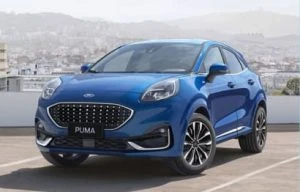
Ford Puma 2022
I’m not quite sure why, but Ford no longer sell us a new Fiesta Hatchback. However, you can buy a brand new Ford Fiesta-based Puma in 2022, which is a small SUV (Hatchback on steroids) that comes with a 92kW/170Nm 3-cylinder turbo petrol engine. Cabin space is claimed to be class-leading, and the boot expands from 456 litres to 1161 litres. You can also enjoy a fuel consumption figure of around 5.3 litres/100 km.
Honda
Honda’s ever reliable Civic is still a nice drive today. In 2010 Honda offered it in a Hybrid Sedan shape that employed a little 1.3 litre Hybrid Honda engine, delivering a combined economy of around 4.5 – 5.0 litres/100 km.
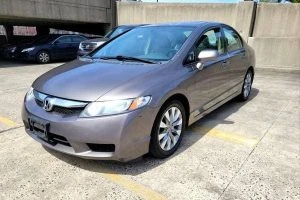
Honda Civic 2010
2022 sees the Civic come alive with a very classy exterior and a powerful 1.5-litre Turbo petrol engine with 131 kW of power and 240Nm of torque. Somewhere around 6.3 litres/100 km is attainable, and with a ride that is comfortable and athletic.
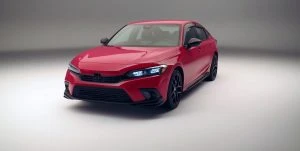
Honda Civic 2022
To find Honda’s current fuel miser, the brand new HR-V is an eco-friendly rewarding drive. Honda’s e:HEV technology in the HR-V utilises an intelligent 2-Motor i-MMD hybrid system that seamlessly switches between three modes to give you optimal performance, and a smoother, greener, and more fun driving experience. A claimed 4.3 litres/100 km for the e:HEV-L hybrid and 5.8 litres/100 km for the Vi X 1.6-litre petrol motor is on offer.
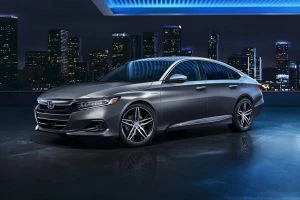
Honda Accord Hybrid Sedan 2022
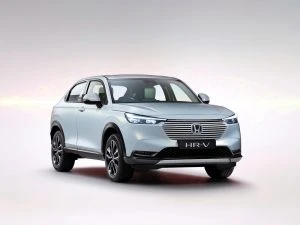
2022 Honda HR-V
All class, you can also get yourself into one of the best Hybrid Sedans you can buy: the 2022 Honda Accord Hybrid. It boasts a claimed 4.3 litres/100 km combined fuel economy – a very good figure for what is a sporty, comfortable family sedan, with striking looks and all the modern goodies.
Hyundai
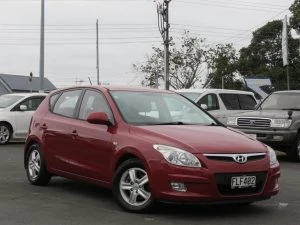
Hyundai i30 CRDI 2010
Back in 2010, Hyundai had come to the economy party with its 1.6 litre turbo-diesel Hyundai i30, known as the SX CRDi. Back then, it was Australia’s cheapest diesel car to buy new. The car was pleasant to look at, and it had a nicely finished interior and plenty of zip. With 255 Nm of torque, and a fuel economy figure of 4.7 litres/100 km, it’s still an economic little car to drive around in today.
2022 has seen Hyundai exploding with all sorts of new and exciting models that are economical, practical, and full of all the best safety and technology as standard! Hyundai’s 2022 i30 Sedan and Hatch can come with a 120kW/203Nm 2.0-litre aspirated petrol engine, a 150kW/265Nm 1.6-litre turbo-petrol and, in hot N variants, a storming 206kW/392Nm 2.0-litre petrol turbo. The 1.6-litre Turbo is the most frugal, offering around 6.8-7.0 litres/100 km combined.
But wait, there’s more! Hyundai’s 2022 IONIC and KONA models have skipped the Hybrid tech and gone straight to EV power.
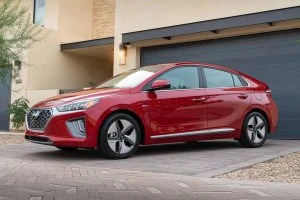
2022 Hyundai IONIQ
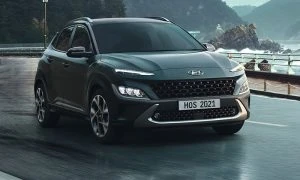
2022 Hyundai KONA
MINI
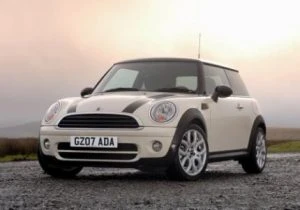
2010 Mini Cooper D
Mini, or BMW more correctly, offered the little Mini Cooper D in 2010 with a small 1.6 litre turbo-diesel engine, excellent fuel economy, and plenty of punch. As the frugal engine is linked to a six-speed manual gearbox, the claimed 3.9 litres/100 km was doable in a number of conditions.
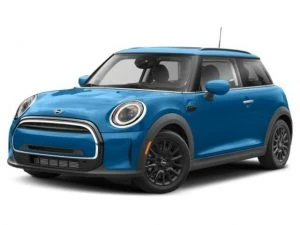
2022 Mini Cooper Classic
Fast forward to 2022, and a new Mini still has one of the catchiest hatchback designs you can buy, along with, perhaps, the best handling characteristics in a FWD small hatchback. They are definitely worth a look and loads of fun. You have many different models to choose from, however the base model Mini Cooper Classic is the most efficient now, with no diesel engine offered anymore. The 3-cylinder 1.5-litre Turbo petrol engine uses DOHC with VVT and VV-Lift technology, and can return a BMW claimed 4.9 (Highway), 6.9 (City), and 5.7 (combined) litres/100 km, respectively.
Peugeot
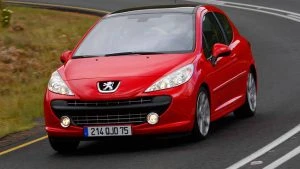
2010 Peugeot 207
Small French Pugs have always been a favourite hatchback of mine. For all their quirks, they are comfortable, practical, efficient, and generally classy all-round. In 2010, the little Peugeot 207 offered a fine economy package in the XT HDi, boasting just 4.8 litres/100 km combined.
2022 sees Peugeot offering us the 2008 GT with a ULP 1.2-litre Turbo 3-Cylinder motor capable of 114 kW, 240 Nm and a claimed economy figure of 6.1 litres/100 km. With this one, you get a very comfortable, practical little SUV with premium safety features.
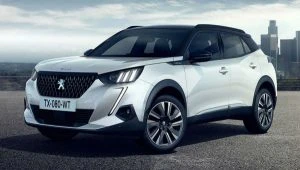
2022 Peugeot 2008 GT
Hybrids have taken off, and so the best and most impressive Peugeot of the lot is the new Peugeot 508 GT Plug-in Hybrid. The 508 range has stunning lines and is an exciting car. The 508 Sedan or 508 Wagon are roomy, very comfortable, and loaded with excellent technology and safety. You fork out around $77k for one of these new, however, it costs way less than a German equivalent. Peugeot reckon you can obtain 1.8 litres/100 km of ULP fuel use if your commute’s stars align. Regardless of whether you quite get down to this, this sort of hybrid travel is impressive in its own right!
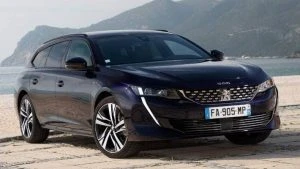
2022 Peugeot 508 GT Wagon
Fiat Happenings

Scattered around Australia are numerous Fiat outlets with showroom teams that are willing to buy, sell and service any of their special brand of car. You’ll find a Fiat showroom in Perth, Adelaide, Melbourne, Canberra, Sydney, Wollongong, Brisbane and on the Sunshine Coast. There are even more places around Australia who are experts in servicing or accessing parts for your Fiat or Fiat Abarth vehicles. This leaves you very little need to hold off being the proud owner of a new or used Italian legend should you so desire.
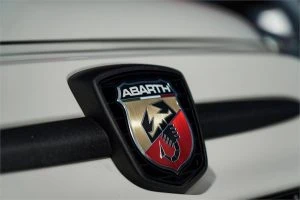
New 2021/2022 Fiat vehicles offer a variety of small 4- and 5-seater cars that come as standard little hatchbacks or hatchbacks with a bit more Abarth pep and performance. The Abarth brand are the performance models that are special Fiat 500s with lots of fun and plenty of zip to make your drive both entertaining and unique. The standard Fiat 500 is a surprisingly roomy small car that is comfortable and efficient to drive.
Fiat also does a range of commercial vehicles that are mainly a variety of medium and large vans. These are popular vans for businesses because Fiat offer their range of modern, safe vans at a reasonable price, and the team are willing to back their vans up with a competitive servicing and warranty package for any of their new Fiat-commercial-model buyers. Fiat also offer the Ducato in a range of motorhome and camper styles.
Fiat really is a quintessential “Made in Italy” stamp with all its Italian history, style, constant innovation and decent quality being part of the modern range. The recent Fiat 500 has seen 80% of its sales outside of Italy, and it is a model that leads the city car segment in Europe together with its cute little sibling, the Fiat Panda.
Recently, the introduction of the Hybrid Fiat 500 and Panda has given an extra boost to the sales of both models. These are exceptionally economical cars. In Italy, the stylish Fiat 500X has been refreshed, ready to continue playing a leading role in many Italian family’s lives. Indeed, since its launch in 2014, the Fiat 500X has always led its segment in Italy, and the car regularly features in the European top 10 small-car segment.
Recent news from Fiat in Europe has seen some other new model launches, which would also be nice to see become available here in Australia – particularly for those of us who want to get the benefits of driving a small and efficient car with Italian style. The final months of last year saw the new Fiat 500, Tipo, Tipo Cross and Panda range, and so Fiat has brought 2021 around with the entire line-up of cars being completely refreshed.
A lot of effort has gone into providing new Fiats and Abarths with all the latest technology, safety, comfort and style for each new variant. New models also boast Euro 6D-Final-compliant engines across the entire range. The Connect trim level is directed at customers who want to stay connected at all times. Models with Connect come standard with the 7-inch Uconnect infotainment system with DAB radio, Apple CarPlay and Android Auto, the easy and efficient way to exploit the services of your device while travelling in your car.
Standard features of the 2021 Fiat 500 also includes cruise control, a sports steering wheel with built-in controls, 15-inch alloy wheels and fog lights. You can also select the dedicated new Perbene Grey/Vesuvius Black two-tone insignia. The 2021/2022 Fiat 500X comes with black seats, a techno-leather steering wheel, 16-inch alloy wheels, blacked-out windows, fog lights, LED DRLs, parking sensors, along with dusk sensors and rain sensors.
Here is a picture of the stunning little Abarth F595. Check out the gorgeous body kit and quad exhausts!
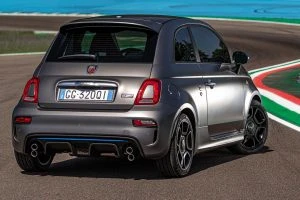
Abarth F595